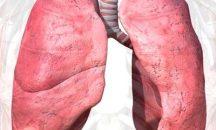Blood Pressure: How dangerously low can it go?
The conventional wisdom has always been that we should all strive to keep our blood pressure low. Even though this is true, having really low blood pressure can be dangerous, as it can impair your body’s ability to absorb oxygen, resulting in damage to the heart and brain.
Low blood pressure is when your blood pressure reading is lower than 90 millimeters of mercury (mm Hg) for the top number (systolic) or 60 mm Hg for the bottom number (diastolic).
Low blood pressure (also known as hypotension) can occur in anyone, though it may be more common depending on your age or other risk factors: genetic makeup, taking certain medications, and having certain diseases(diabetes, heart conditions)
The cause of low blood pressure isn’t always clear. However, it may be associated with the following:
● pregnancy
● hormonal problems
● some over-the-counter and prescription medications
● heart failure
● abnormal heart rhythms
● widening or dilation of the blood vessels
● heatstroke
● liver disease
● loss of blood from bleeding
● low or high body temperature
● a severe blood infection
● severe dehydration from vomiting, diarrhea, burns or fever
● a reaction to medication or alcohol
A sudden drop in blood pressure robs the brain of adequate blood supply to the brain. This can lead to dizziness or lightheadedness.
Other symptoms include fainting, blurred vision, nausea, fatigue, lack of concentration, and in extreme conditions shock.
If you experience any of the above symptoms, seek emergency medical attention as it is important to determine the cause of low blood pressure so appropriate treatment can be given.
Some people are known to take alcohol in an attempt to increase their blood pressure but that is a path I will not recommend.
Others opt for caffeinated drinks like coffee and tea.
Dr. Kojo Essel often recommends that one engages in exercise which is your best “weapon to normalise blood pressure.”
Quite often when one has low blood pressure, standing still for long periods of time can cause a further drop in blood pressure due to peripheral pooling of blood and may cause complications.
In such people Dr Essel highly recommends taking several steps even if standing in one place to help maintain blood pressure at a safe level.
Other ways of managing low blood pressure are:
• adding a little salt to food ( do this with caution to avoid excesses and downsides of increased salt intake)
• Increase water (other fluids) intake to increase blood volume.
• May need to wear compression stockings in extreme situations
• Some may require medication.
• Pay attention to body positions; do not move quickly from sitting to standing position for instance
• Eat small portions of food at a time
• Exercise should be a combination of strength training and cardiovascular exercise that increases heart rate)
Source:
Maureen Masopeh
Content Creator (Health Essentials Ghana Ltd)
References:
1. Dr Kojo Cobba Essel; Unravelling the Essentials of Health and Wealth
2. Mayoclinic; Low Blood Pressure (Hypotension)
3. Webmd
By Dr. Kojo Cobba Essel















